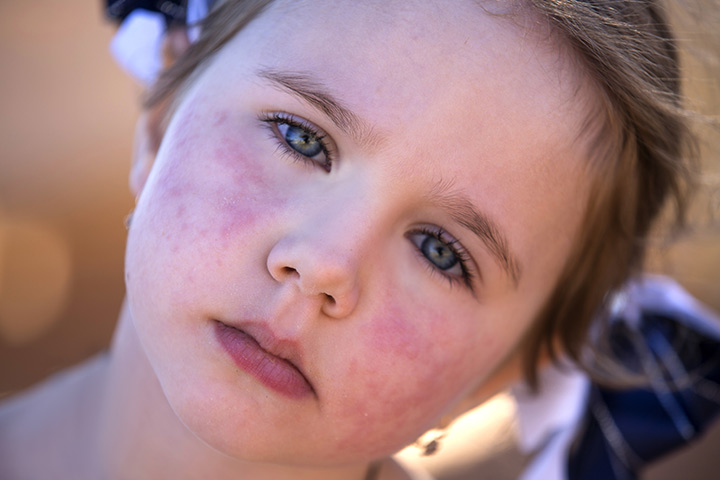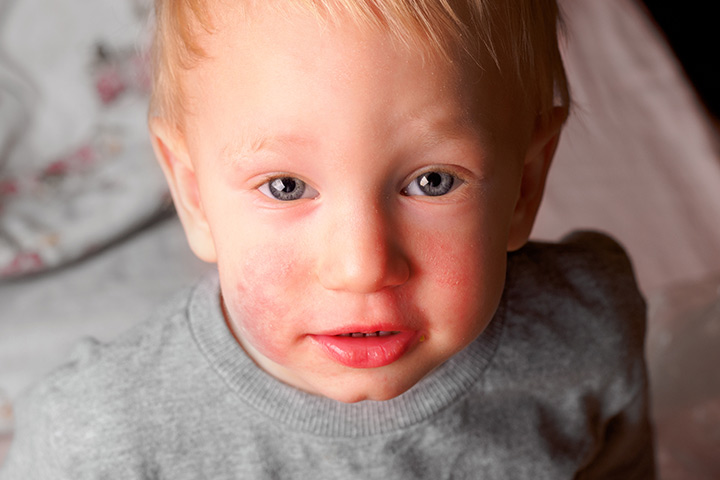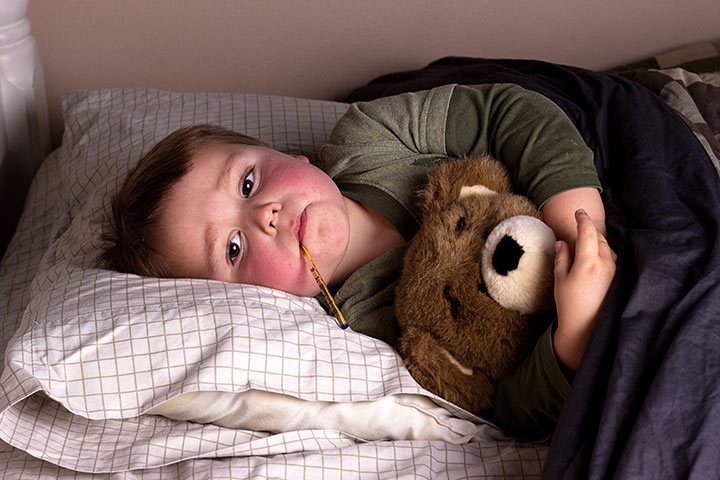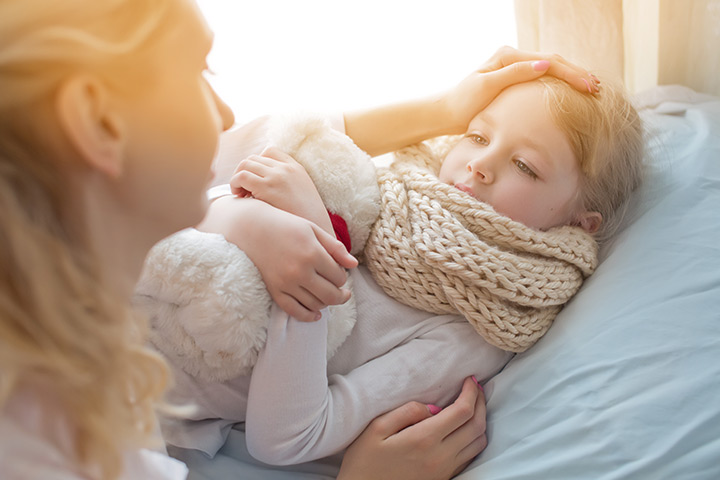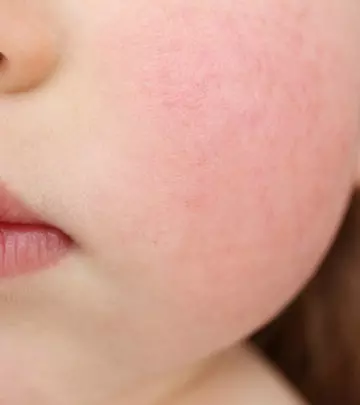
Image: Shutterstock
Soon after you become a mother, your world will begin revolving around your little one’s well-being. And, any health issue can get a mom worried to no extent. One of the most common medical conditions that a child suffers from is slapped cheek syndrome. And, unfortunately, this is not easy to spot. So, if you are worried whether your child is suffering from this condition, don’t panic. We, at MomJunction, are here to help you out. Here, we will discuss what this condition is all about, what are the signs you need to be looking out for, and how you can treat it. This guide here will explain you everything in detail.
About Slapped Cheek Syndrome
Slapped cheek syndrome, also known as the fifth disease, is primarily caused due to parvovirus B19 (1). This is commonly known to affect kids between the age of four and twelve. This is generally transmitted by an infected person’s respiratory secretions (2). Most parents don’t worry themselves with this disease as many don’t even realize that their babies are infected with this virus. And, it mostly goes away on its own without any complications too.
How Is This Infection Spread?
The slapped cheek syndrome is generally pretty mild. It is usually transmitted by respiratory droplets, which make its entry into the air. These droplets can come from an infected individual’s sneeze, cough, or even blood. Healthy kids and adults are less likely to face any risk from this disease (3). But, if some child is infected, it may spread to other kids in the classroom pretty quickly.
What Are The Signs You Should Be Looking Out For?
The symptoms usually start with children feeling unwell for several days. Here are the symptoms that you can look out for (4):
- Your little one is running a high temperature (38 degree Celsius or above)
- Has a sore throat and a runny nose
- Suffers from headaches
- A bright red rash may appear on either side of the cheeks after one to three days
- Few days after the appearance of cheek rashes, even a body rash of light-pink color may appear
- The skin may also become itchy
It normally takes two weeks for the rashes on the cheek to disappear. Usually, the body rash also goes away within the same time period. But, at times, the body rashes may come and go for around a month. This happens more so if you are anxious, feeling hot, working out, or stressed. Pain in the joint, as well as stiffness, may also be present in the case of adults. And, this symptom can continue to be there for a few more days, even after all the other signs have disappeared (5).
What You Can Do To Treat At Home?
In most of the cases, you may not need to visit the general physician for slapped cheek syndrome. A disease common in children, it should disappear on its own in around three weeks or so. There are some things that you can do at home to ease up your little one’s symptoms until then (6):
- Make your little one rest properly
- Increase their intake of fluids to steer away from dehydration. And, babies can continue with their routine breastfeeding
- Give prescribed medications if the fever is too high, or the joint pain and headache is a lot
- If the infant’s skin is becoming too itchy, use a moisturizer on the skin
However, do consult your doctor if you notice the following symptoms:
- The skin has become too pale
- If the little one is facing breathing difficulties
- Excessive fatigue and tiredness
- Fainting
We hope that this guide was able to help you understand the slapped cheek syndrome better. Don’t you worry so much. Keep looking out for the signs and all will be fine! All the best!

